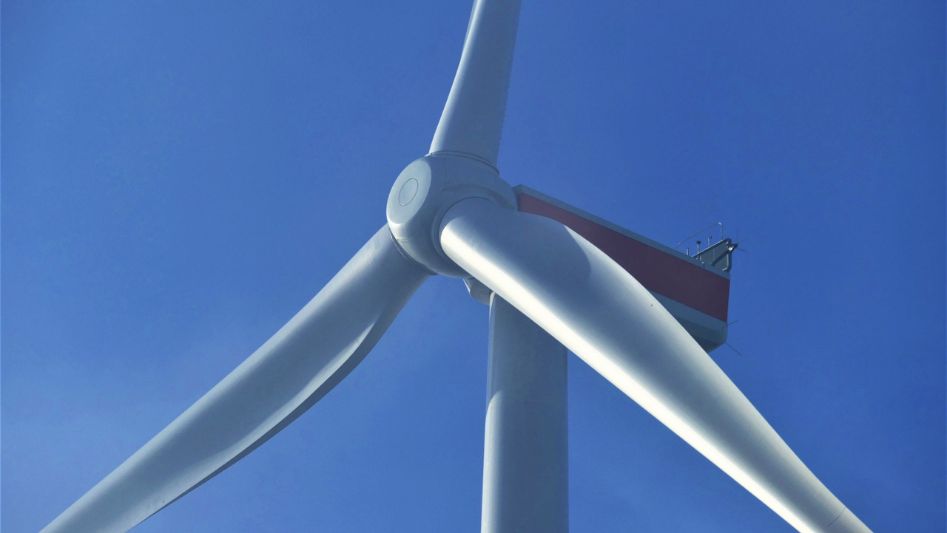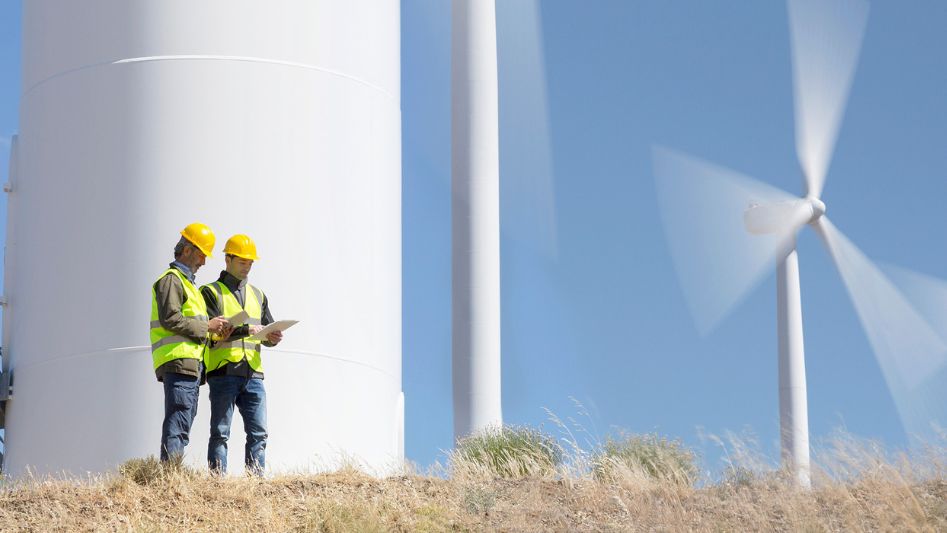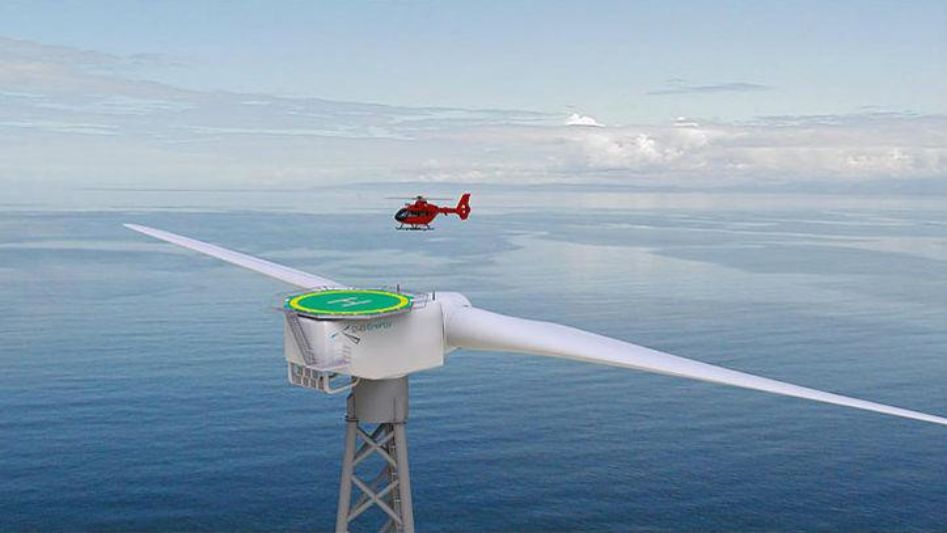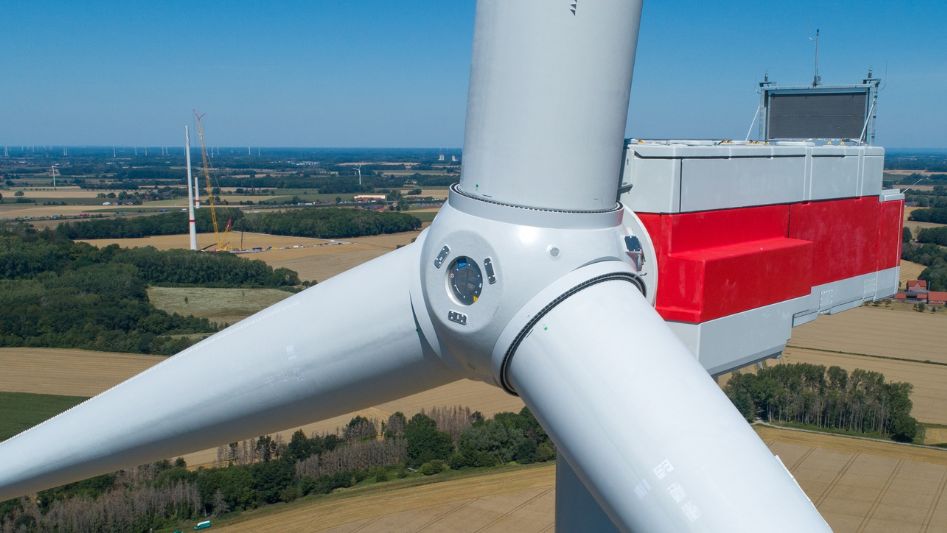Wind energy has emerged as a critical player in the global transition towards sustainable and renewable sources of power. At the heart of this revolution lies the wind turbine, a sophisticated machine that converts kinetic energy from the wind into electricity. Central to the effectiveness of a wind turbine is its blade design and the materials used in their construction. This article delves into the intricate world of wind turbine blades, exploring their evolution, modern designs, and the cutting-edge materials that make them efficient and sustainable.
Table Of Content
We invite you to read: “Wind Turbines Around the World: A Global Perspective on Wind Power”

Evolution of Wind Turbine Blades
Wind turbines have come a long way since their inception. Early windmills, dating back thousands of years, had simple wooden blades. These rudimentary designs gradually evolved into more efficient shapes, but it wasn’t until the late 19th and early 20th centuries that serious research into aerodynamics began.
With advancements in materials science, the transition from wood to steel and eventually composite materials like fiberglass and carbon fiber revolutionized blade design. Modern wind turbine blades are marvels of engineering, optimized for performance, durability, and efficiency.
Blade Design: Art Meets Science
Aerodynamic Profiles
The design of wind turbine blades is a delicate balance between aerodynamic efficiency and structural integrity. Blades are engineered with specific airfoil profiles, the shape of the blade cross-section. These profiles are carefully crafted to minimize drag, maximize lift, and ensure optimal energy capture from the wind.
Length and Aspect Ratio
The length of a wind turbine blade is a critical factor in determining its energy-producing capacity. Longer blades have a larger sweep area, enabling them to capture more wind energy. However, longer blades also exert higher structural loads, necessitating robust materials and construction techniques. The aspect ratio, which is the ratio of the blade length to its chord (width), is another crucial parameter. Higher aspect ratios are generally preferred for their higher efficiency in converting wind energy.
Twist and Taper
Blade twist refers to the variation in angle along the length of the blade. This design element allows the blade to maintain an optimal angle of attack as it rotates through the wind. Tapering involves reducing the width of the blade towards the tip. This design feature helps in maintaining even stress distribution and reducing the potential for turbulence-induced fatigue.
We invite you to read: “The Aerodynamics of Efficiency: Innovations in Wind Turbine Design”

Materials Revolutionizing Blade Construction
Fiberglass Composites
Fiberglass composites, a combination of glass fibers and a polymer matrix, have been instrumental in the evolution of wind turbine blades. They offer a remarkable balance of strength and flexibility, making them an ideal choice for blade construction. These composites are corrosion-resistant, lightweight, and have the added benefit of being recyclable.
Carbon Fiber
Carbon fiber, known for its exceptional strength-to-weight ratio, is becoming increasingly prevalent in wind turbine blade construction. Its high stiffness and durability make it an attractive choice for creating longer and more efficient blades. However, carbon fiber’s high cost remains a challenge for widespread adoption.
Hybrid Materials
Some blade manufacturers are exploring hybrid materials, combining elements of fiberglass and carbon fiber to optimize cost, performance, and sustainability. These hybrid solutions aim to strike a balance between the advantages of each material.
Future Trends and Innovations
As wind energy continues to gain momentum, researchers and engineers are pushing the boundaries of blade technology. Concepts like morphing blades, inspired by bird wings, and bio-inspired designs are being explored to further enhance efficiency and adaptability to changing wind conditions.
Additionally, the development of smart materials embedded with sensors and actuators holds the promise of real-time adjustments to optimize blade performance.
We invite you to read: “Noise Pollution and Wind Turbines: Seeking Silent Solutions in Urban Settings”

Conclusion
Wind turbine blades represent the pinnacle of engineering ingenuity, balancing aerodynamic efficiency with structural integrity. The evolution of materials and designs has propelled the wind energy industry into new realms of sustainability and efficiency. As we look towards a future powered by renewable energy, the continued advancement of blade technology will play a pivotal role in harnessing the full potential of wind energy.
FAQs
What is the purpose of wind turbine blades?
Wind turbine blades capture kinetic energy from the wind and convert it into electricity through the rotation of the turbine’s rotor.
What materials are wind turbine blades made of?
Wind turbine blades are commonly constructed using materials like fiberglass composites, carbon fiber, or hybrid combinations of these materials.
How are wind turbine blades designed for efficiency?
Blade design involves aerodynamic profiles, length, twist, and taper to maximize energy capture and structural integrity.
What is the future of wind turbine blade technology?
Innovations include morphing blades, bio-inspired designs, and smart materials to enhance performance and adaptability.
You May Also Like
- Solar Panels vs. Wind Turbines: Which Renewable Energy Source Wins?
- Economic Winds of Change: How Wind Turbines and Solar Panels Affect Local Economies
- Future-Proofing Energy: The Role of Wind Turbines and Solar Panels in Climate Resilience
- Wind Turbines of Tomorrow: Innovations and Future Prospects
- Harnessing the Wind: An Introduction to Wind Turbines and Wind Energy

